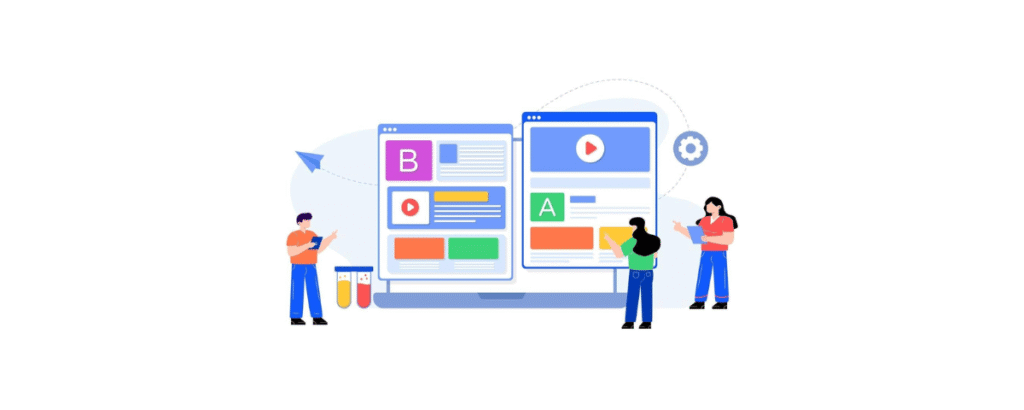- Instagram Marketing Strategy 2025: Tips, Tools & Growth - September 3, 2025
- Facebook Marketing Guide 2025: Strategies to Boost ROI - September 3, 2025
- How to Do an SEO Audit in 2025: Step-by-Step Guide - September 3, 2025
A meta title isn’t just a label tucked away in your site’s code. It’s your digital handshake, your billboard, and often the very first impression a potential visitor has of your brand. Done right, it signals both to search engines and humans what your page is all about. Done poorly, and you risk getting buried under your competitors who took the time to fine-tune theirs.
Here’s the kicker: a meta title is only a handful of words long, yet it directly impacts your SEO performance, click-through rate, and ultimately, your organic traffic. If you’re serious about ranking higher and driving revenue, not just traffic, you can’t afford to treat it as an afterthought.
At Hiigher, we’ve seen how even a subtle tweak to a title, like moving a primary keyword to the front, can lift rankings and double click-through rates. And that’s why in this guide, we’re diving deep into the strategies that separate average titles from high-performing ones.
Contents
- What Exactly is a Meta Title Tag?
- Why Meta Titles Are SEO Powerhouses
- Meta Title vs. Other Meta Tags
- How Search Engines Actually Use Meta Titles
- The Direct Impact on Click-Through Rates
- Common Mistakes That Kill Meta Titles
- Power Words That Boost Click-Through Rates
- Aligning Meta Titles With Page Content
- Tools for Testing and Previewing Meta Titles
- Meta Titles and User Intent
- Meta Titles vs. H1 Tags
- Smart Brand Placement in Meta Titles
- How to Add Meta Titles in HTML
- Adding Meta Titles in WordPress
- Good vs. Bad Meta Titles
- Optimizing Meta Titles for Mobile Search
- Monitoring Meta Title Performance
- Meta Titles and Organic Traffic Impact
- Resources for Improving Meta Titles
- Expert Tips for Meta Title Optimization
- Frequently Asked Questions About Meta Titles
- Conclusion
What Exactly is a Meta Title Tag?
A meta title tag is an HTML element written inside <title> tags within your website’s <head> section. It may sound technical, but the concept is straightforward: it defines your page’s official title, which shows up in three critical places:
- Search Engine Results Pages (SERPs): That bold, clickable headline you see after hitting “search.”
- Browser Tabs: Ever had 15 tabs open and relied on those little snippets to know where you are? That’s your meta title pulling its weight.
- Social Media Shares: When someone drops your link on Twitter, LinkedIn, or Facebook, the meta title is usually the first text that appears.
Keeping your title between 50–60 characters ensures it shows in full on Google without getting chopped off. Why does this matter? Because a cut-off headline often loses the very keyword or hook that could’ve convinced someone to click.
Why Meta Titles Are SEO Powerhouses
Think of your meta title as prime real estate. It’s one of the first signals Google scans to figure out what your page is about. And because search engines aim to deliver the most relevant results, they lean heavily on your title when deciding whether your content deserves page one.
But SEO isn’t the only player here. Meta titles are also your secret weapon for click-through rates (CTR). Even if you manage to land a top spot in the search results, if your headline looks vague or uninspired, people will scroll right past it.
A strong meta title balances both worlds: it tells search engines, “I’m relevant,” while whispering to users, “Click me, I’ve got the exact answer you’re looking for.”
Here are some rules of thumb we live by at Hiigher when optimizing meta titles:
- Front-load your keywords. If “Best SEO Tools” is your main keyword, start your title with it.
- Stay under 60 characters. Brevity keeps your message sharp and avoids truncation.
- Match user intent. Write titles that mirror the exact phrasing people type into search bars.
- Keep it human. Keywords matter, but don’t sacrifice readability. If it doesn’t feel natural when you read it out loud, rewrite it.
Meta Title vs. Other Meta Tags
It’s easy to lump meta titles in with other meta tags, but here’s the distinction:
- Meta Title (<title>): Drives both rankings and clicks. It’s highly visible to users and search engines.
- Meta Description (<meta name=”description”>): Acts as your sales pitch under the title in search results. While it doesn’t directly influence rankings, it affects CTR.
- Other Meta Tags: Like robots or viewport tags, which handle technical instructions but don’t influence SEO the same way.
The meta title is king because it’s the only meta element that pulls double duty: ranking power plus user engagement.
How Search Engines Actually Use Meta Titles
If you’ve ever wondered how Google decides what to show on page one, your meta title is one of its loudest signals. Think of it as a name tag at a networking event: it tells everyone in the room who you are and why they should talk to you.
Here’s how search engines use it behind the scenes:
- Indexing and Relevance – When crawlers scan your site, your meta title is one of the first elements they record. It tells them what your page covers and which keywords it should rank for.
- Keyword Matching – Place your primary keywords toward the beginning of your title. This isn’t just superstition, Google gives more weight to the opening words.
- SERP Display – Meta titles appear as the clickable headline. If your title is compelling and matches what people are searching for, your CTR skyrockets.
- User Expectations – Search engines track whether users stick around after clicking. A meta title that aligns with your content reduces bounce rates, which indirectly supports rankings.
In short: optimize your meta title, and you’re not just pleasing the algorithm, you’re aligning perfectly with user behavior.
The Direct Impact on Click-Through Rates
Imagine scrolling through search results. Which title would you click on?
- Option A: SEO Tips for Beginners
- Option B: 10 Proven SEO Tips for Beginners That Actually Work
Both technically describe the page, but Option B feels specific, trustworthy, and worth your time. That’s the difference a compelling meta title makes, it earns the click.
Studies show that titles under 60 characters display correctly most of the time and lead to higher CTRs. More importantly, when you front-load your most relevant keywords, users instantly recognize the page as a match for their search.
At Hiigher, we’ve tested countless variations for clients in eCommerce, SaaS, and education. The pattern is always the same: sharper, keyword-rich titles that match user intent win out, often doubling or even tripling click-through rates compared to vague ones.
Where Meta Titles Show Up Online
Meta titles may feel hidden in code, but they pop up in multiple places where users interact with your brand:
- Search Results: The clickable headline everyone sees.
- Browser Tabs: Crucial for people juggling multiple tabs.
- Social Media Shares: Platforms often pull your meta title automatically.
- Search Engine Indexing: A ranking signal every crawler pays attention to.
Think of them as your digital storefront signs. Whether someone’s Googling late at night, browsing on mobile during their commute, or clicking through LinkedIn shares, your title is the first hook that convinces them to step inside.
The Perfect Character Count
When it comes to meta titles, length matters. Google typically displays the first 50–60 characters, which equals roughly 600 pixels of width. Go longer, and you risk your carefully chosen keywords being chopped in half.
Here’s how to keep your titles sharp and effective:
- Stick to 50–60 characters. Shorter than 50 often feels vague, longer than 60 gets truncated.
- Prioritize keywords early. If users can’t see the core topic right away, they’ll scroll past.
- Check pixel width. Some tools like Moz or Yoast show you how your title will look in SERPs.
One of our SaaS clients once used titles like “Comprehensive Guide to Optimizing Cloud Performance for Businesses.” Guess what? Google chopped off half of it. After shortening it to “Cloud Performance Optimization Guide for Businesses,” their CTR went up by 28%, simply because people could finally read the whole headline.
Strategic Keyword Placement
Keywords aren’t just for content, they’re the backbone of your meta title. But it’s not about stuffing them in; it’s about placement and flow.
Here’s a proven framework for keyword placement:
- Lead with the primary keyword. Example: SEO Audit Checklist | Hiigher
- Match the content. Don’t bait-and-switch. If the keyword doesn’t align with your page, bounce rates will spike.
- Integrate naturally. Titles should read smoothly, not like a laundry list of keywords.
- Test and adjust. Sometimes even moving a keyword two words earlier can make a measurable difference.
Remember: people don’t click on strings of keywords. They click on clear, trustworthy titles that sound like real humans wrote them.
Crafting Compelling Meta Titles
Writing a meta title isn’t about cramming in keywords or sticking to a character count, it’s about creating a mini-headline that convinces people to click. Think of it like writing the subject line of an email: if it doesn’t grab attention, no one opens it.
Here are a few strategies I’ve seen consistently outperform bland titles:
- Start with the keyword, end with the hook. Example: SEO Strategy Guide | Grow Your Traffic Fast
- Use power words. Terms like Ultimate, Proven, Essential, Best spark curiosity and urgency.
- Speak directly to the reader. Instead of SEO for Businesses, try SEO Tips Every Small Business Needs Today.
- Keep it conversational. Read your title out loud, if it sounds stiff, rewrite it.
At Hiigher, we often A/B test title variations for clients. It’s not unusual to see one version outperform another by 20–30% in click-through rates. The difference usually comes down to clarity, emotion, and keyword placement.
Common Mistakes That Kill Meta Titles
Plenty of websites miss out on rankings and clicks because they fall into one of these traps:
- Leaving the meta title blank. It sounds obvious, but it happens more than you’d think. Google fills in the gaps, and usually not in your favor.
- Being too vague. Titles like Home or Welcome tell users nothing about your content.
- Exceeding the character limit. Long titles get chopped, losing important keywords.
- Keyword stuffing. Repeating “SEO Tips SEO Guide SEO Tricks” screams spam and kills trust.
- Duplicating H1s. Your H1 and meta title should complement each other, not be exact copies.
One eCommerce brand we worked with had titles like “Buy Shoes Online, Cheap Shoes Online, Online Shoes Store.” Google saw it as spammy, users ignored it, and bounce rates were sky-high. We rewrote them into cleaner, keyword-smart titles like “Affordable Men’s Shoes Online | Free Shipping Available.” Their CTR shot up within weeks.
Power Words That Boost Click-Through Rates
Not all words are created equal. Some spark curiosity and emotion, making users far more likely to click. Research shows that adding power words to your meta titles can increase CTR by up to 30%.
Here’s a cheat sheet of words that work:
- Urgency: Now, Today, Limited, Fast
- Value: Free, Exclusive, Proven, Guaranteed
- Emotion: Best, Ultimate, Essential, Powerful
- Action: Discover, Learn, Try, Unlock
For example, compare these two titles:
- SEO Guide for Beginners
- The Ultimate SEO Guide for Beginners (Proven Tips)
Both are under 60 characters, but the second feels more credible, valuable, and worth clicking.
Aligning Meta Titles With Page Content
One of the fastest ways to lose user trust is to promise one thing in your title and deliver something else on the page. Searchers are quick to back out if your content doesn’t match expectations, and when they do, Google notices.
To avoid this, follow these rules:
- Match keywords to content. If your title says SEO Checklist 2024, the page should actually contain a checklist for 2024.
- Be specific, not generic. “Marketing Tips” is forgettable. “10 Marketing Tips for SaaS Startups” is clear and useful.
- Make each title unique. Duplicate titles confuse search engines and can tank your rankings.
- Update regularly. Search intent shifts, so refreshing your titles keeps them competitive.
A wellness brand we supported at Hiigher had dozens of blog posts with near-identical titles like “Healthy Recipes.” Once we reworked them into unique, intent-focused titles like “10 Healthy Vegan Recipes for Busy Weeknights,” their organic clicks grew by 40% in 60 days.
Tools for Testing and Previewing Meta Titles
Even the best-written meta titles can fall flat if you don’t test them before publishing. Luckily, there are plenty of free and paid tools that let you preview how your title will look in search results. This step ensures your headline won’t get cut off and gives you a chance to compare options.
Here are some go-to tools we often use at Hiigher:
- Capitalize My Titles – Quickly checks character count and previews how your title will display in Google.
- Yoast SEO (WordPress plugin) – Lets you edit and preview meta titles directly inside your CMS.
- SEMrush – Analyzes keywords inside your title and shows how competitive they are.
- Headline Analyzers (like CoSchedule) – Scores your headline for clarity, emotion, and engagement.
Pro tip: Don’t just check for length. Test readability too. A meta title that’s technically “correct” but confusing to read won’t bring in clicks.
Meta Titles and User Intent
Search engines like Google don’t just want to show any result, they want to show the right result. That’s why aligning your meta title with user intent is critical.
Ask yourself: What is my audience actually looking for when they type this keyword?
- If they’re looking for information, a title like “Beginner’s Guide to SEO | Free Checklist” works.
- If they’re looking to buy, something like “Affordable SEO Software for Small Businesses | Free Trial” is stronger.
When your title matches intent, you attract the right audience, which means lower bounce rates, higher engagement, and better long-term rankings.
At Hiigher, we see this constantly with client campaigns. A SaaS company once had the title “Understanding Cloud Security.” The intent mismatch hurt performance, users searching for “cloud security software” weren’t looking for a blog post. We changed it to “Best Cloud Security Software for Startups | 2024 Guide” and within two months, their clicks doubled.
Meta Titles vs. H1 Tags
A common mistake is to treat your meta title and H1 tag as duplicates. While they should be related, they serve different roles:
- Meta Title: Gets clicks from search results.
- H1 Tag: Greets users once they’re on the page and sets the stage for your content.
Best practice: keep your meta title short and SEO-focused, while letting your H1 be a little more descriptive or conversational.
Example:
- Meta Title: Best Email Marketing Tools 2024 | Hiigher
- H1 Tag: The 12 Best Email Marketing Tools to Grow Your Business in 2024
The two work together: one brings users in, the other assures them they’re in the right place.
Smart Brand Placement in Meta Titles
Including your brand name in a meta title is a balancing act. You want the visibility, but you also don’t want to waste precious space on words that don’t help with rankings.
The general rule: place your brand name at the end of the meta title, separated by a pipe (|).
For example:
- SEO Checklist for 2024 | Hiigher
- Affordable Web Design Services | Hiigher
Why? Because users search for keywords first, not your brand. Leading with keywords satisfies search engines and user intent, while ending with your brand reinforces recognition and consistency.
This approach is especially powerful for growing agencies and businesses who want to appear credible while still winning on keyword relevance.
How to Add Meta Titles in HTML
If you’re working directly with code, adding a meta title is surprisingly simple. It lives inside your webpage’s <head> section.
Here’s the basic format:
<head>
<title>Your Meta Title Here</title>
</head>
That’s it. Just one line of code, but that single line carries a lot of weight for both SEO and user experience.
When writing your title in HTML:
- Keep it clear and descriptive. Users and search engines should instantly know what the page is about.
- Stay between 50–60 characters. Prevents truncation in Google’s results.
- Use keywords naturally. No spammy repetition, just one or two primary terms.
- Double-check accuracy. If your title promises “2024 SEO Tips,” your content better deliver exactly that.
Even small mistakes, like leaving a default CMS title in place, can cost you rankings and traffic.
Adding Meta Titles in WordPress
For WordPress users, the process is even easier. Instead of editing code, you can use SEO plugins to handle everything for you.
Using SEO Plugins
Plugins like Yoast SEO and All in One SEO Pack let you customize your meta titles inside the editor. They also give you a live preview of how the title will appear in Google.
Steps:
- Open your post or page editor.
- Scroll to the SEO section (provided by the plugin).
- Enter your desired meta title in the “SEO Title” field.
- Use the character counter to stay under 60 characters.
- Preview to confirm how it looks in search results.
Customizing Title Fields
By default, WordPress often uses your post headline as the meta title. But headlines are usually longer than what works best for SEO. Customizing your meta title field gives you the flexibility to create something concise and keyword-focused.
Example:
- Post Headline: Everything You Need to Know About Starting a Small Business in 2024
- Meta Title: Small Business Startup Guide 2024 | Hiigher
Both are accurate, but the meta title is sharper, SEO-ready, and more likely to earn clicks.
Good vs. Bad Meta Titles
Seeing examples can make the difference crystal clear. Let’s compare:
Good Meta Titles
- How to Lose Weight Fast: 7 Proven Tips
- Best Budget Laptops 2024 | Top Picks Reviewed
- Easy Vegan Recipes for Busy Weeknights
Why they work:
- Concise and under 60 characters.
- Keyword-rich.
- Directly aligned with user intent.
Bad Meta Titles
- Welcome to Our Homepage
- Cheap Shoes Online, Shoes Buy Cheap Shoes Online Store
- SEO Tips, SEO Guide, SEO Tricks
Why they fail:
- Too vague (or too spammy).
- Exceed character limits.
- Don’t inspire trust or clicks.
At Hiigher, we’ve seen firsthand how cleaning up messy titles transforms performance. A client once had dozens of pages titled simply “Blog”. After renaming each with keyword-focused, user-friendly titles, their organic traffic rose by 35% in three months.
Optimizing Meta Titles for Mobile Search
Mobile traffic now makes up more than half of global web usage, which means your meta titles need to work on small screens first. What looks fine on desktop may get cut off on a smartphone.
Here’s how to keep your titles mobile-friendly:
- Stay within 50–60 characters. Shorter titles perform better on mobile.
- Prioritize essential keywords first. Mobile users skim quickly, you want them to see the most important part upfront.
- Keep it simple. Long, complex titles are harder to scan on smaller screens.
- Avoid repetition. Every word needs to earn its place.
Example:
- Desktop-friendly but bad on mobile: The Ultimate Comprehensive SEO Guide for Small Businesses in 2024
- Mobile-optimized: SEO Guide 2024 for Small Businesses | Hiigher
The second title is clear, concise, and fits perfectly on mobile search results.
Monitoring Meta Title Performance
Publishing your meta titles is just the beginning. To maximize SEO impact, you need to track and measure how they perform.
Tracking SERP Performance
Use tools like Google Search Console to see how often your titles appear in search results (impressions), how many clicks they earn, and their average ranking position.
If a page is getting impressions but very few clicks, it’s a red flag: your meta title isn’t convincing users.
Identifying Weak Titles
Signs of underperforming titles include:
- Low CTR despite good rankings.
- Titles exceeding 60 characters and getting truncated.
- Outdated terms (e.g., “SEO Trends 2021” still live in 2025).
- Duplicate titles across multiple pages.
Regular audits help catch these issues before they hurt your visibility.
Updating Meta Titles Regularly
Search algorithms, user behavior, and keyword trends change all the time. If your titles stay static for years, you’ll fall behind.
Here’s a simple routine we recommend at Hiigher:
- Audit every quarter. Review all major pages for outdated or underperforming titles.
- Refresh with new keywords. Use keyword tools to find emerging terms your audience is searching for.
- Run A/B tests. Test two variations of the same page with slightly different titles to see which performs better.
- Check competitors. If rivals are outranking you, analyze their meta titles for inspiration.
Example: One of our education clients had a blog post titled “Best Online Courses.” It was ranking but barely getting clicks. We updated it to “Best Online Courses 2025 | Top Learning Platforms Reviewed” and CTR improved by 42%.
Meta Titles and Organic Traffic Impact
When optimized correctly, meta titles can drive 20–30% more organic traffic. Why? Because they influence both:
- Rankings: Search engines reward relevant, keyword-rich titles.
- Clicks: Users are more likely to engage with clear, compelling headlines.
Here’s a quick snapshot of how different elements affect traffic:
| Element | Best Practice | Organic Traffic Impact |
| Primary Keyword | At the start | Higher rankings |
| Title Length | Under 60 characters | +30% visibility |
| User Intent Match | Aligns with queries | Higher engagement |
| A/B Tested Titles | Based on performance data | Improved CTR |
| Descriptive Language | Clear and specific | Enhanced trust & clicks |
The data is clear: titles aren’t decoration, they’re revenue drivers.
Resources for Improving Meta Titles
If you want your meta titles to consistently perform, don’t rely on guesswork. Use reliable resources and tools to refine your process. Here are a few worth bookmarking:
- Capitalize My Titles – Quick SERP preview and length checker.
- Keyword Research Tools (SEMrush, Ahrefs, Ubersuggest) – Helps you find high-impact keywords to weave into your titles.
- SEO Plugins (Yoast, Rank Math, All in One SEO) – Built-in guidance on character count, keyword use, and readability.
- Headline Scoring Tools (CoSchedule, Sharethrough) – Evaluates clarity, emotion, and engagement of your title.
Pair keyword research with testing tools. Knowing what people search for is step one, but seeing how your title performs in the wild is what drives long-term SEO wins.
Expert Tips for Meta Title Optimization
After working with brands across eCommerce, SaaS, education, and wellness, we’ve seen which title strategies hold up, and which fall flat. Here are our expert takeaways:
- Keep it under 60 characters. Over 90% of titles under this length display correctly.
- Put your main keyword first. It signals relevance instantly.
- Use power words wisely. Don’t overdo it, but sprinkle them in for impact.
- Match user intent. The best titles answer what the searcher had in mind.
- Review quarterly. Algorithms and behavior change, your titles should too.
One of Hiigher’s SaaS clients once ranked in position #6 for a major keyword. By simply rewriting the meta title with stronger intent-matching language, they jumped to #3 and doubled organic signups in under two months. That’s the kind of compounding return you get from fine-tuning the small details.
Frequently Asked Questions About Meta Titles
What is an example of a meta title?
Example: “Top SEO Strategies for Higher Rankings | Hiigher.” It’s keyword-rich, under 60 characters, and clearly describes the content.
What’s the difference between a meta title and a page title?
The meta title appears in search results and browser tabs. The page title (H1) appears on the page itself. Both should complement each other but not be identical.
How is a meta title different from a meta description?
The meta title attracts clicks and boosts rankings, while the meta description summarizes content to improve click-through rates. Descriptions don’t directly affect rankings but support engagement.
Do I need a unique meta title for every page?
Yes. Duplicate titles confuse search engines and weaken your SEO. Every page should have a unique, descriptive title that matches its content.
Conclusion
Your meta title is more than just a technical tag, it’s your first impression, your search engine handshake, and often the deciding factor in whether a user clicks your link or your competitor’s.
By keeping titles concise, front-loading keywords, aligning with user intent, and regularly updating them, you can turn those few words into a consistent source of organic traffic.
At Hiigher, we’ve seen how powerful this small change can be. Clients who once overlooked their titles are now driving steady growth, simply because they invested time into getting them right.
Think of meta titles as your website’s marquee. Keep it sharp, relevant, and engaging, and you’ll stand out in crowded search results where attention is fleeting and competition is fierce.
Action step: Audit your top 10 pages today. If your titles are too long, vague, or outdated, rewrite them using the principles we’ve covered. A half-hour of work could lead to months of higher rankings and better clicks.
How useful was this?
Click on a star to rate it!
Average rating 0 / 5. Vote count: 0
No votes so far! Be the first to rate this post.
We are sorry that this post was not useful for you!
Let us improve this post!
Tell us how we can improve this post?




